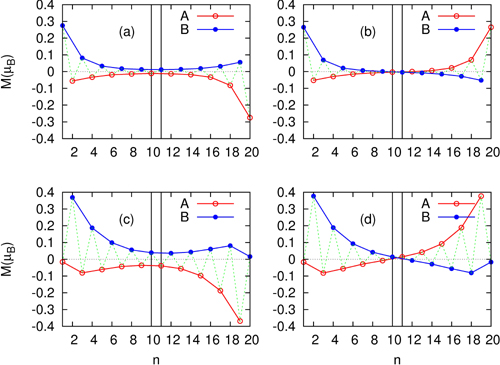Recently, Prof. ZENG Zhi’s group in the Institute of Solid State Physics, Chinese Academy of Science (ISSP-CAS) found a way to greatly stabilize the AFM ground state in zigzag-edged graphene nanoribbons (ZGNRs) by edge dihydrogenation.
ZGNRs have been a very hot topic during the past decade due to the edge states and the edge magnetism and consequently their potential as building blocks in spintronic devices. In the research history of graphene nanoribbons, one of the most fascinating observations is that Louie’s group finds half-metallicity in ZGNRs by driving a transverse electrical field through the ribbons (see Nature 444, 347(2006)). This pioneering work opens the door of a rush for searching half-metallicity in ZGNRs with various ways. Following Louie et al’s work, many schemes for realizing half-metallicity have been proposed. However, there is a long standing problem that has never been clearly addressed or even mentioned. Is the half-metallicity in ZGNRs obtained in those ways robust enough so that ZGNRs can practically be used as spin filtering devices for achieving 100% spin polarized current at a working temperature? All the related previous works neglect this problem intentionally or unintentionally. As a matter of fact, the half-metallicity in ZGNRs works on the characteristics of the AFM ground state and all the previous schemes for achieving half-metallicity suffer from a very small energy difference ΔEFM-AFM (only about several meV), which means that a very low temperature can easily turn ZGNRs into a paramagnetic state and break the half-metallicity obtained. Thus, how to keep a large enough ΔEFM-AFM is crucially important.
The researchers in ISSP-CAS proposed one way for greatly increasing the energy difference between the AFM ground state and the FM state by edge dihydrogenation. They demonstrated that such a difference is increased by almost one order of magnitude. For certain ribbons, ΔEFM-AFM is larger than 30 meV, thus the working temperature of the devices is raised to room temperature. Such an increase arises from the much larger edge magnetic moment, the much slower decay rate of the edge state to the ribbon center (see Figure 1) and consequently, the much stronger magnetic interaction in the dihydrogenated ZGNRs. Thus, the dihydrogenated ZGNRs are much more attractive than monohydrogenated ribbons or ribbons saturated by other ways. This is a fascinating observation and is of great significance to those who work on graphene-based spintronics. These findings have been published as a Rapid Communication in Physical Review B (DOI: 10.1103/PhysRevB.86.081408) on August 14, 2012.

Figure 1: The magnetic moment on each carbon atom (a) for the AFM state in H:H, (b) for the FM state in H:H, (c) for the AFM state in H2:H2, (d) for the FM state in H2:H2.